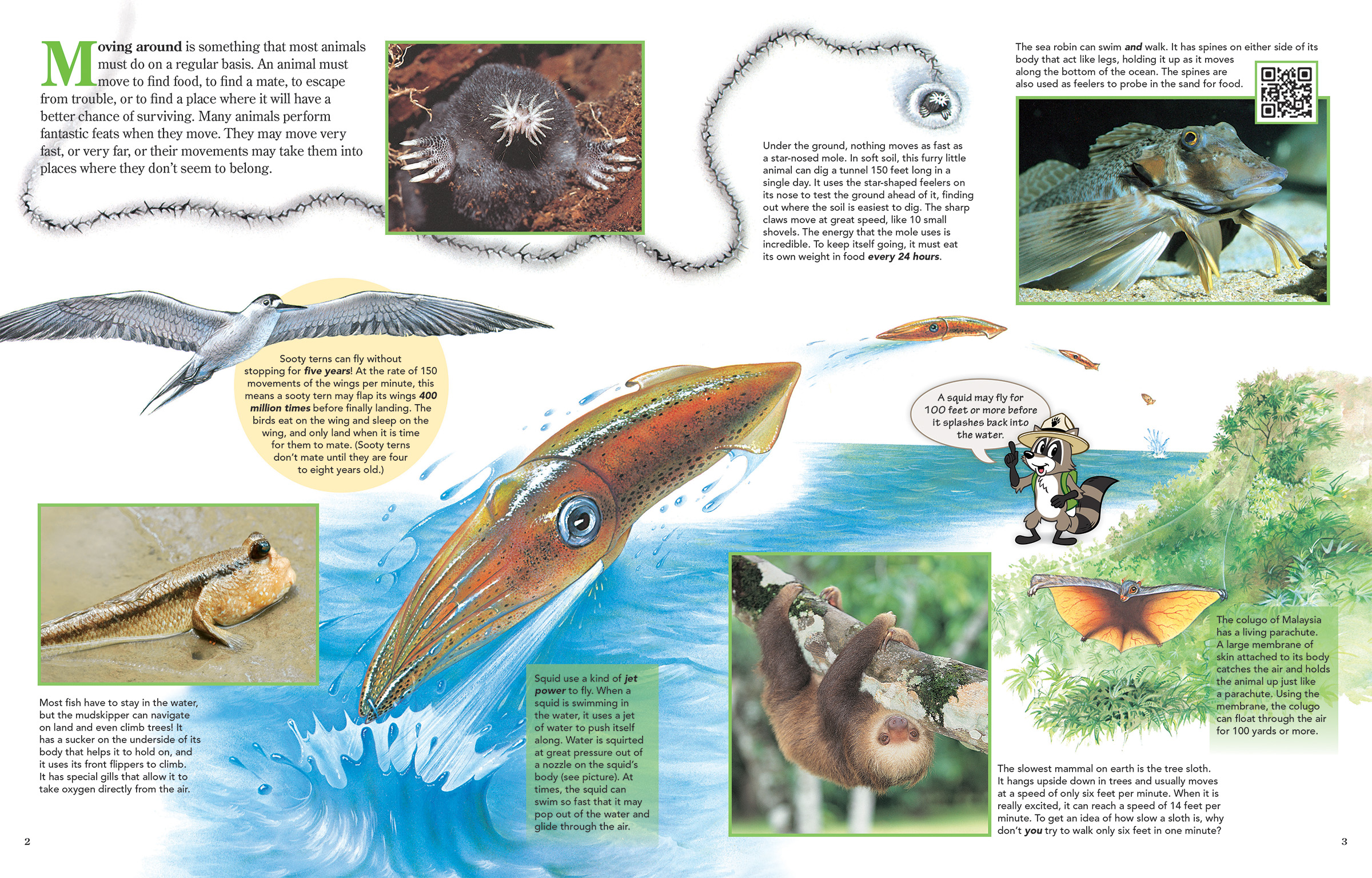
Moving Around
ByMoving around is something that most animals must do on a regular basis. An animal must move to find food, to find a mate, to escape from trouble, or to find a place where it will have a better chance of surviving. Many animals perform fantastic feats when they move. They may move very fast, or very far, or their movements may take them into places where they don’t seem to belong.
Sooty terns can fly without stopping for five years! At the rate of 150 movements of the wings per minute, this means a sooty tern may flap its wings 400 million times before finally landing. The birds eat on the wing and sleep on the wing, and only land when it is time for them to mate. (Sooty terns don’t mate until they are four to eight years old.)
Most fish have to stay in the water, but the mudskipper can navigate on land and even climb trees! It has a sucker on the underside of its body that helps it to hold on, and it uses its front flippers to climb. It has special gills that allow it to take oxygen directly from the air.

Squid use a kind of jet power to fly. When a squid is swimming in the water, it uses a jet of water to push itself along. Water is squirted at great pressure out of a nozzle on the squid’s body (see picture). At times, the squid can swim so fast that it may pop out of the water and glide through the air.
A squid may fly for 100 feet or more before it splashes back into the water.
Under the ground, nothing moves as fast as a star-nosed mole. In soft soil, this furry little animal can dig a tunnel 150 feet long in a single day. It uses the star-shaped feelers on its nose to test the ground ahead of it, finding out where the soil is easiest to dig. The sharp claws move at great speed, like 10 small shovels. The energy that the mole uses is incredible. To keep itself going, it must eat its own weight in food every 24 hours.
The sea robin can swim and walk. It has spines on either side of its body that act like legs, holding it up as it moves along the bottom of the ocean. The spines are also used as feelers to probe in the sand for food.
The colugo of Malaysia has a living parachute. A large membrane of skin attached to its body catches the air and holds the animal up just like a parachute. Using the membrane, the colugo can float through the air for 100 yards or more.
The slowest mammal on earth is the tree sloth. It hangs upside down in trees and usually moves at a speed of only six feet per minute. When it is really excited, it can reach a speed of 14 feet per minute. To get an idea of how slow a sloth is, why don’t you try to walk only six feet in one minute?

